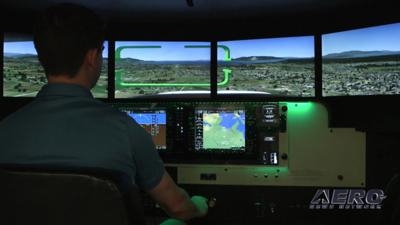Sat, Jun 30, 2018
Rule Goes Into Effect July 27
The FAA has published a rule in the Federal Register laying out new guidelines for the use of "aviation training devices" for flight training.

According to the published rule, use of these training devices has proven to be an effective, safe, and affordable means of obtaining pilot experience. This rulemaking also addresses changing technologies by accommodating the use of technically advanced airplanes as an alternative to the use of older complex single engine airplanes for the commercial pilot training and testing requirements.
Additionally, this rulemaking broadens the opportunities for military instructor pilots or pilot examiners to obtain civilian ratings based on military experience, expands opportunities for logging pilot time, and removes a burden from sport pilot instructors by permitting them to serve as safety pilots. Finally, this rulemaking includes changes to some of the provisions established in an August 2009 final rule.
These actions are necessary to bring the regulations in line with current needs and activities of the general aviation training community and pilots.
This final rule amends the regulations governing the use of aviation training devices (ATDs). As stated in the NPRM, the FAA approves ATDs for use in pilot certification training. Title 14 of the Code of Federal Regulations (14 CFR) part 60 governs the qualification of flight simulation training devices (FSTD), which include full flight simulators (FFSs) levels A through D and flight training devices (FTDs) levels 4 through 7.
Under the final rule, the FAA is:
- Adding a definition of ATD in § 61.1;
- removing the requirement for an instructor to be present when a pilot accomplishes his or her instrument recency in an FFS, FTD, or ATD; and
- amending the regulations to allow pilots to accomplish instrument recency experience in ATDs at the same interval allowed for FFSs and FTDs.
The rule becomes effective July 27, 2018. There are extensive details about the new rules provided at the FMI link below.
(Source: Federal Register. Image from file)
More News
We're Everywhere... Thanks To You! Even with the vast resources and incredibly far-reaching scope of the Aero-News Network, every now and then a story that should be reported on sl>[...]
“The Coast Guard anticipates new aircraft procurements may be based off Sikorsky’s MH-60R aircraft, which is the maritime variant of the H-60 in active production. Diff>[...]
Aero Linx: Classic Jet Aircraft Association (CJAA) The CJAA Formation and Safety Team (FAST) Mission is to be the sole authorized provider of formation training and certification f>[...]
During A Low Pass Over A Gravel Bar, The Airplane’S Tailwheel Impacted An Area Of Rough, Uneven Terrain Analysis: The pilot reported that he was flying low-level over various>[...]
Hold For Release Used by ATC to delay an aircraft for traffic management reasons; i.e., weather, traffic volume, etc. Hold for release instructions (including departure delay infor>[...]
 ANN FAQ: How Do I Become A News Spy?
ANN FAQ: How Do I Become A News Spy? Aero-News: Quote of the Day (10.28.25)
Aero-News: Quote of the Day (10.28.25) ANN's Daily Aero-Linx (10.28.25)
ANN's Daily Aero-Linx (10.28.25) NTSB Final Report: Aviat Aircraft Inc A-1B
NTSB Final Report: Aviat Aircraft Inc A-1B ANN's Daily Aero-Term (10.28.25): Hold For Release
ANN's Daily Aero-Term (10.28.25): Hold For Release



